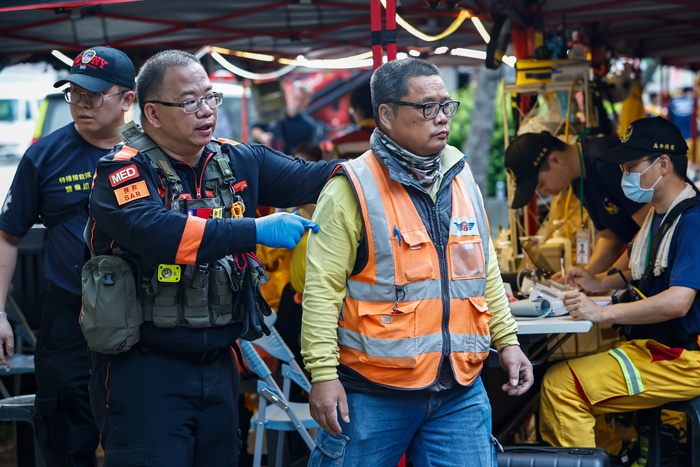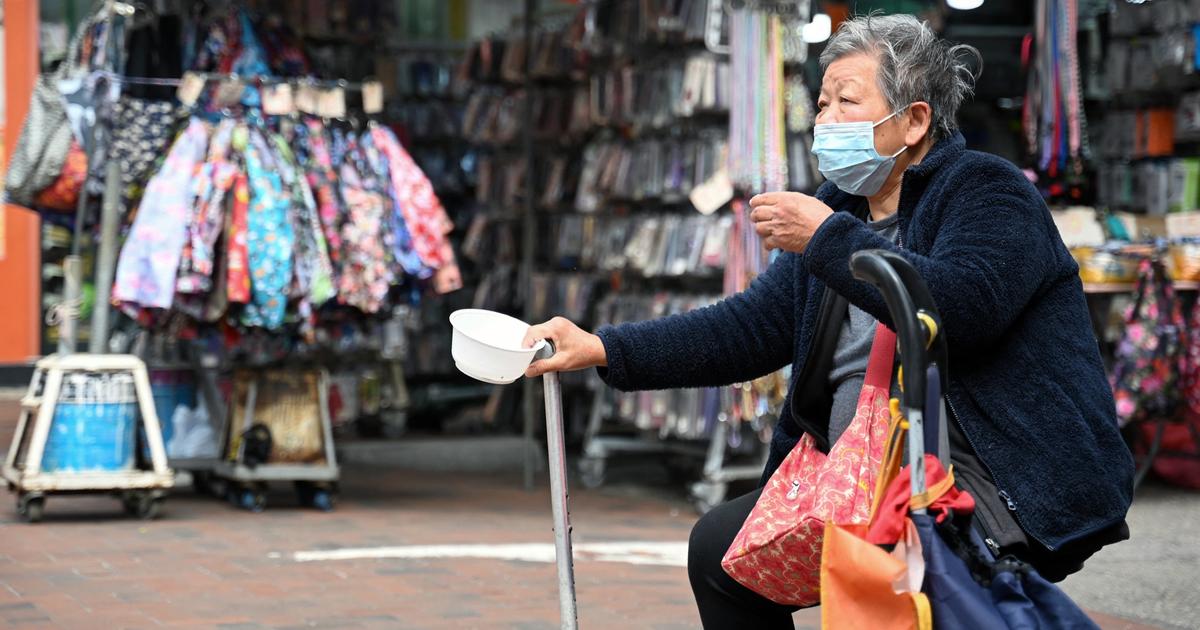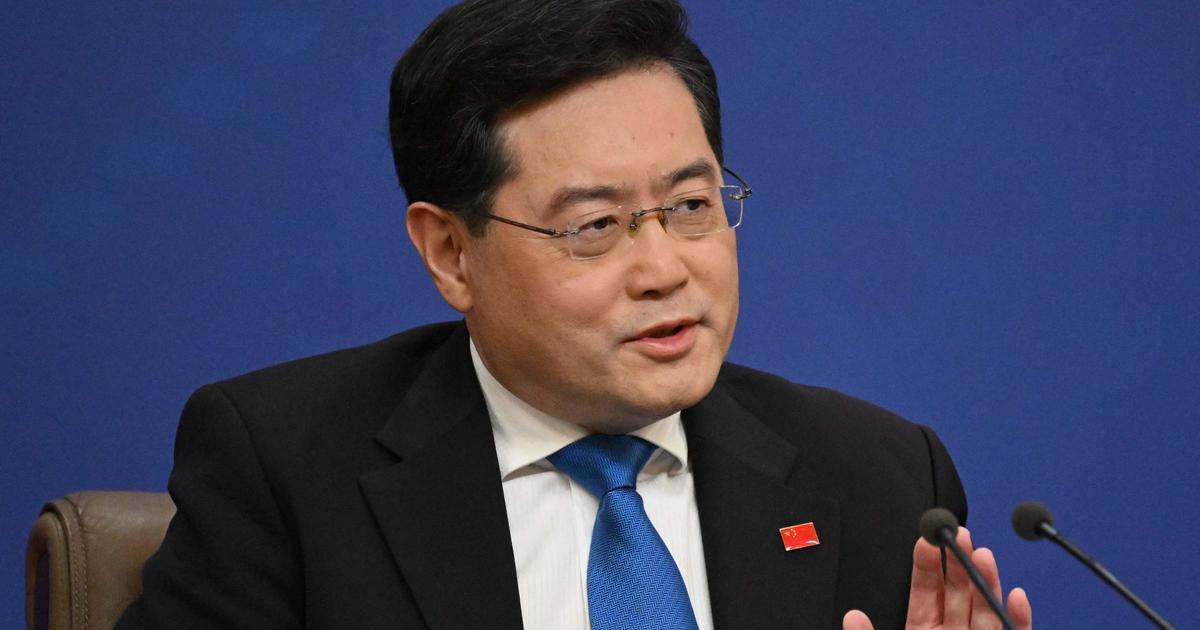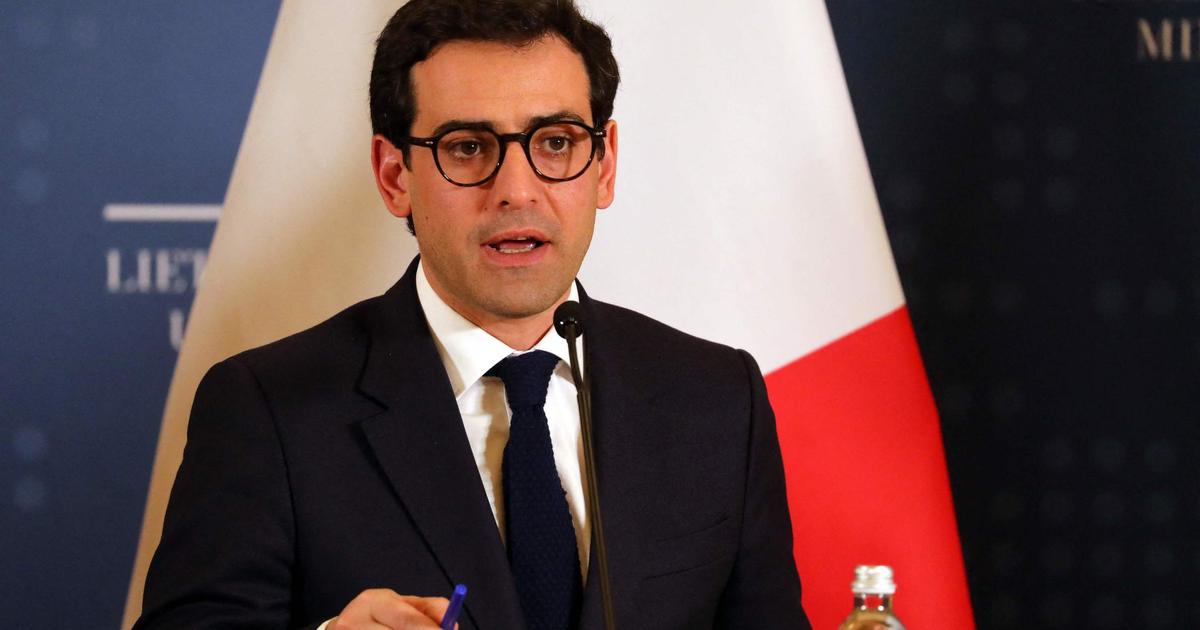The Chinese Communist Party is the sole ruling party of China.
This is what they should know about the history and role of the party.
The Chinese Communist Party (CCP) is celebrating its 100th birthday this year.
Founded in 1921 by Mao Zedong and some dung riders, it came to power in China in 1949 after a civil war against the nationalist party Kuomintang.
The CCP formed the People's Republic of China as a one-party state on the Soviet model.
The party dominates all state organs as well as the military.
Xi Jinping has been the party's general secretary since 2012.
Xi was also appointed president in 2013, and is thus at the head of the state and the party.
With over 90 million members, the CCP is the largest political party in the world.
In its long history, it was responsible for social and economic progress and a good standard of living in China on the one hand, but also for bloody revolutions, human rights violations and the displacement of large numbers of people on the other.
Meanwhile, China's CCP-shaped economic system is what is known as a socialist market economy, which combines features of communism and capitalism.
Communist Party of China: The internal party structures
The General Secretary of the Central Committee holds the highest position in the Chinese Communist Party.
This has been the party leader since the abolition of the chairman's office in 1980.
The Politburo and its Standing Committee of the Politburo are appointed from among the members of the Central Committee.
The Politburo Standing Committee, which currently has seven members, is the most powerful political body in the country.
It is also headed by the Secretary General.
All regional party factions, groups and departments are also subordinate to the Central Committee.
Since the CCP is the sole government in China, the state offices are also held by the higher ranks of the party.
The Secretary General is currently also the President of China.
This office has been held by Xi Jinping since 2012, who, together with the six other members of the Politburo Committee, forms the center of political power in China.
The entire Central Committee, with over 300 members, is also the country's National People's Congress, and the party convention is the CCP's general assembly, which meets every five years.
Anyone wishing to join the CCP has to go through a selection process in which applicants first have to pass a training course and later an exam.
The best candidates are accepted into the party.
Communist Party of China: founded 100 years ago and cooperation with the nationalists
The Chinese Communist Party was founded in 1921. After decades of civil war and the abdication of the last imperial dynasty of Manchuria, the country was officially a republic, but had no unified and functioning government.
After the First World War, the Allies transferred the former German colony of Tsingtao in China to Japan in the Treaty of Versailles.
This decision sparked great outrage in China and several competing political movements.
One of these movements was Chinese communism.
With the help of Professors Li Dazhao and Chen Duxiu, who represented the way of thinking of social classless Marxism, several communist party cells were formed in China in Shanghai, Beijing, Changsha, Guangdong, Wuhan and Jinan.
They were supported by Grigori Woitinski, a Russian representative of the Comintern.
This international alliance of communist parties, founded in 1919, had sent Woitinski to China specifically for this purpose.
In July 1921, representatives of these party cells - including Mao Zedong, who later became the first party chairman - met in Shanghai and founded the CCP in a multi-day meeting as a centralist organization that strived for a communist, classless society.
To this end, capitalists should first be expropriated and rule established by the people.
To this end, party members set up trade unions and educational and study circles for workers.
In cooperation with the liberal, bourgeois nationalist Kuomintang party Sun Yat-sens, national unity was to be achieved.
After Sun's death, however, the Kuomintang was led by the much more conservative military commander Chiang Kai-shek, whereupon cooperation with the communists broke up in 1927 - in the middle of a joint campaign against revisionist warlords in northern China.
The Kuomintang formed the government from 1927 and moved the capital to Nanking on the Yangtze River.
Communist Party of China: First Council Republics and Long March
So, in the summer of 1927, the CCP began to build up its own armed troops to support local revolts and enforce the expropriations of large landowners.
In doing so, the party wanted to appropriate the capital of rich citizens in the service of the local population.
From 1928 onwards, with the help of the Comintern, the communists established so-called Soviet-style council areas in various regions of China - one of them in the remote Jinggangshan Mountains of Jiangxi Province under the leadership of Mao Zedong and Zhu De.
At the same time, the CCP continued to try to "take over large cities in the country."
At the same time, more and more fighters came to Jinggangshan.
In 1934 their numbers were too large to be able to live on the local economy.
Mao and Zhu left the enclave and moved their troops on to the southeast.
It was the beginning of the famous Long March, which led the Communist Red Army under great privation from Jiangxi over the plateaus of western China to the loess regions of the north, repeatedly under fire from nationalist troops.
Several CCP associations met in a place called Zunyi before heading north.
They held a conference there at which Mao Zedong prevailed over rival factions of the party that did not share his views on revolutionary strategy.
Mao emerged from the Zunyi meeting as the undisputed party leader and military commander and subsequently led the troops to the Yan'an cave area in Shaanxi Province.
Communist Party of China: War and Revolution
During this time, Imperial Japan began its campaigns of conquest in China, starting from the Manchurian north of the country.
In 1936, the communists again formed an alliance of convenience with the Kuomintang party to fight together against Japan.
On July 7, 1937, the Pacific War officially began, which is also considered to be the beginning of World War II in Asia.
At that time Japan was on the advance in China and took, among other things, the then capital Nanking.
The Kuomintang Army suffered heavy losses in the fighting and was severely decimated, while the CCP took control of large areas in the hinterland, despite the formal continued cooperation, and wanted to save its troops for the post-war revolution.
After the end of World War II and the collapse of Japan, the civil war between communists and nationalists broke out again.
The Red Army was helped by its guerrilla tactics and the support of local farmers.
In 1949 the communists entered Beijing, where Mao Zedong proclaimed the People's Republic of China on October 1, 1949 on the balcony of the Tiananmen Gate.
The CCP's right to rule has since been enshrined in the state constitution.
Chiang Kai-shek and the rest of the Kuomintang troops withdrew to the island of Taiwan and formed the Republic of China, which for many years claimed all of mainland China.
To this day, the CCP does not recognize Taiwan as a state, but sees it as part of the People's Republic of China.
Chinese Communist Party: The party under Mao Zedong
Mao Zedong, who orientated himself on the positions of communists and socialists like Karl Marx, Friedrich Engels, Vladimir Lenin and Josef Stalin, shaped the Communist Party of China for decades.
In 1943 he was officially chairman of the party and remained so until his death on September 9, 1976. Shortly after the proclamation of the People's Republic of China, the party began a campaign to suppress “counter-revolutionaries”.
The CCP, which had only just come to power through a revolution, wanted to prevent political opponents from banding together for a renewed uprising.
Oppositionists, primarily remaining members of the Kuomintang, were silenced or killed.
In the 1950s, Mao Zedong developed his own ideology, which was later called Maoism.
He made this value system accessible to the Chinese population in his “little red book” - also known as the “Mao Bible”.
The ideas formulated in the book found favor with leftists in the rest of the world for a while.
As Mao reinterpreted Marxism and placed it more in connection with farmers and agriculture, this led to conflict with the Soviet Union. Because the CCP also refused to accept the dominance of the Communist Party of the Soviet Union (CPSU) in the global communist movement, it came about to the rift between the two countries.
In 1969 there were even military skirmishes between the two states on the border river Ussuri.
In 1966, Mao Zedong started the so-called "Cultural Revolution" with the help of some allies of the CCP's left wing.
Mao closed schools and sent an entire generation of young people to work in the countryside.
Young people formed so-called Red Guards and terrorized entire population groups - especially those whose ancestors had once owned money or supported the nationalists.
The turmoil, in which countless people were politically persecuted and killed, lasted ten years and could only be completely stopped after Mao's death in 1976.
Communist Party of China: The Party Politics to Date
After Mao's death, Deng Xiaoping took over the leadership of the People's Republic of China, but for the most part did not continue Mao's policies.
He described the "Cultural Revolution" as a grave mistake and began a cautious economic opening that accelerated over the years.
Deng established special economic zones in which he allowed capitalist experiments.
These were later carried over to the whole country.
Deng's modernizations improved the state of agriculture, industry, defense, and science.
Deng also made the country more open to foreign countries and a better standard of living for the Chinese.
But Deng Xiaoping did not want democratization either.
When students and ever larger groups of the Beijing population demonstrated in Tiananmen Square in 1989 against corruption and for political openness, Deng was one of those who advocated tough military action.
At that time Deng was the strong man behind the official party leadership around the comparatively liberal General Secretary Zhao Ziyang.
Zhao was deposed and placed under house arrest.
At least hundreds of demonstrators were killed when the army cracked down on the protests.
The CCP has not dealt with this brutality to this day.
At the latest when Jiang Zemin came to power, who was General Secretary of the CCP and President of China from 1989 to 2002, China's economic system moved further and further away from classical communism.
Under Jiang, for example, private entrepreneurs were given more and more freedom, which resulted in a real middle class.
Jiang even allowed entrepreneurs - the former class enemy - to join the CCP.
Many well-known entrepreneurs - such as Jack Ma from Alibaba - are now party members.
The subsequent government of head of state and party leader Hu Jintao again placed greater emphasis on preventing the differences between the population groups from becoming too great.
The current party leader, Xi Jinping, is fighting against corruption and for China's rise to the rank of world power.
None of them had reforms of the political system in mind.
Today the CCP calls China's economic system a socialist market economy.
This is kind of a mixture of capitalism and socialism.














